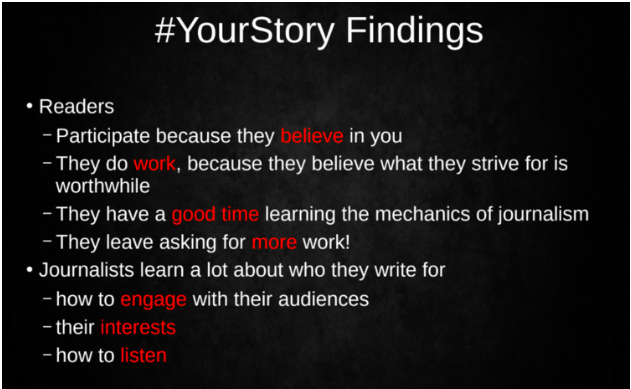

Photo : Pixabay.
How to Make Your Journalism More ‘Memberful’
The Membership Puzzle Project went around the world to identify memberful routines that incorporate community members’ knowledge and produce value for news organizations.
 The sites we studied in this research — Direkt36, Krautreporter, CORRECTIV, Inside Story, Maldita, De Correspondent, Eldiario.es, GEDI Group, Nice-Matin, ProPublica, Cape May County Herald, CHOICE, The Quint, Clydesider Creative, Kosofe Post, RED/ACCIÓN, Tvoe Misto, The Bureau of Investigative Journalism, and the Financial Times — have little in common. They’re geographically diverse. They have widely different coverage areas. They don’t share the same business models. But they all do public service journalism. And they have all been successful in practicing memberful routines: not one-off crowdsourced reporting projects, but regular means of incorporating community members’ knowledge and producing value from it.
The sites we studied in this research — Direkt36, Krautreporter, CORRECTIV, Inside Story, Maldita, De Correspondent, Eldiario.es, GEDI Group, Nice-Matin, ProPublica, Cape May County Herald, CHOICE, The Quint, Clydesider Creative, Kosofe Post, RED/ACCIÓN, Tvoe Misto, The Bureau of Investigative Journalism, and the Financial Times — have little in common. They’re geographically diverse. They have widely different coverage areas. They don’t share the same business models. But they all do public service journalism. And they have all been successful in practicing memberful routines: not one-off crowdsourced reporting projects, but regular means of incorporating community members’ knowledge and producing value from it.
That’s how they earned the attention of our team and a place in new research, out in English and Spanish.
What Are Memberful Reporting Routines?
A simple example of a memberful way of working is maintaining a database of members and their expertise that is routinely tapped to provide technical proofreading of articles and investigations. It might take time, but it also adds value. The value includes the added “stickiness” of the member who is consulted about things that member knows a lot about.
At RED/ACCIÓN in Argentina, members are invited to join a WhatsApp group led by a reporter while he or she is covering a story so that their questions, perspectives, and needs are better addressed.
At Maldita in Spain, readers flag possible disinformation in the text, videos, and images they see and charted rising instances of information about LGBTQ issues during gay pride month recently.
At ProPublica in the US, patients and their family members have used private social network groups and other means to communicate to reporters preventable instances of medical malpractice, leading to policy changes nationwide.
At the Bureau Local, journalists joined with social workers across the UK to track publicly available resources for victims of domestic violence, leading to 12 members of parliament speaking about the problem to their constituencies.
The Bureau Local hosted a theater tour in which a domestic violence survivor, Cash Carraway, shared her story in the form of a show called Refuge Woman. Reporter Maeve McClanaghal led the nationwide tour, which included question-and answer-sessions with social workers, local reporters, and domestic violence survivors on stage after the performances.
Think of these and other organizations’ earned wisdom about reporting with members as a set of steal-able ideas: Take them and hack them! We’re seeing it’s possible that a unique style of journalism can be built from these and other routines. It’s also possible that your organization can grow faster. Really. And produce better stories.
Our Methods
Together with two researchers whose work we admire, Katharine Quamby and Joy Jenkins, PhD, we visited 11 sites we knew to be innovative. We thought they could help us answer our question. Staff from eight other organizations with knowledge shared their smarts via a survey. We asked them all: What have you learned so far about memberful routines? What works for you and your community? And when is “community engagement” more trouble than it’s worth?
Memberful routines can work at many different points in the long arc from inception of the idea at one end to distribution and reaction once the final product emerges at the other. We saw them at work in all of these phases:
We found that there is no one formula or a “checklist,” but an array of options where members make different types of commitments. And we heard that some beats and some projects are well suited for member involvement. Some are not.
Several times we heard that interacting with members in these ways helps combat media mistrust. We also learned that making asks of community members, no matter how savvy or experienced they are individually, rarely works if the requests are too vague. Like everyone else, members can lose perspective. At Krautreporter, Sebastian Esser told us: “What hasn’t worked is where we just ask members for their opinions … You have to pose the right questions, otherwise you get views and judgments instead of information or analysis that might be useful for the reporting.”

A CORRECTIV visualization about how journalism can contribute to citizen knowledge and action. Image: Screenshot
Here is what you can find in this report in English and Spanish:
The most common means we saw for enabling memberful routines are through self-hosted platforms (including voting, comments, and callouts); shared work with data (including hackathons); email and email newsletters; surveys; social media; trainings and other education; and editorial meetings and events.
Inside Story in Greece launched the #YourStory initiative three years ago to give readers an opportunity to suggest story ideas. Now, the initiative includes multiple workshops in which readers work alongside journalists to develop, focus, and transition story ideas into full-scale investigations on topics including local government, health, education, and the environment.
This work is resource-intensive, yet there is an increasing amount of interest in it. We hear more reporters, editors, and audience development staff around the world asking: How can this work be operationalized?
With this report you see what we have learned so far about memberful routines. And of course there are limitations and cautions to working closely with members. We share these not to dissuade you from pursuing these routines, but to help as you undertake your own projects with members, donors, subscribers, and contributors:
-
Not every story can have, and not every story should have, reader involvement.
-
Make it crystal clear to community members: Everyone has opinions. Your opinions will not run our newsroom.
-
Member engagement is hard work. Staff need to be identified, trained, and given time to do it right.
-
Be ready to handle the incoming traffic if your callouts and other outreach succeed and you have plenty of takers. Design for potential over-supply of information!
-
Project management is a discipline unto itself. Without it, news sites will find it hard to succeed at establishing memberful routines.
-
Members in their natural state do not necessarily know what news organizations need from them. We have to teach them that part.
-
Not everything “takes” and new approaches are sometimes required.
-
This work may not have immediately positive revenue results. But it can get there.
-
Memberful routines are growing in use. But they can’t be turned on and off like a brand campaign. These are professional practices that require use, additional research, and crucially, gratitude to participating community members.
Read more in English and Spanish. We look forward to your thoughts and additions.
This post first appeared on the Membership Puzzle Project site and is reproduced here with permission.
 The Membership Puzzle Project is public research project by the Dutch journalism platform De Correspondent and New York University. Their aim is to answer the most important question for the future of high quality, public-service journalism: How do we build a sustainable news organization that restores trust in journalism and moves readers to become paying members of an online community?
The Membership Puzzle Project is public research project by the Dutch journalism platform De Correspondent and New York University. Their aim is to answer the most important question for the future of high quality, public-service journalism: How do we build a sustainable news organization that restores trust in journalism and moves readers to become paying members of an online community?















